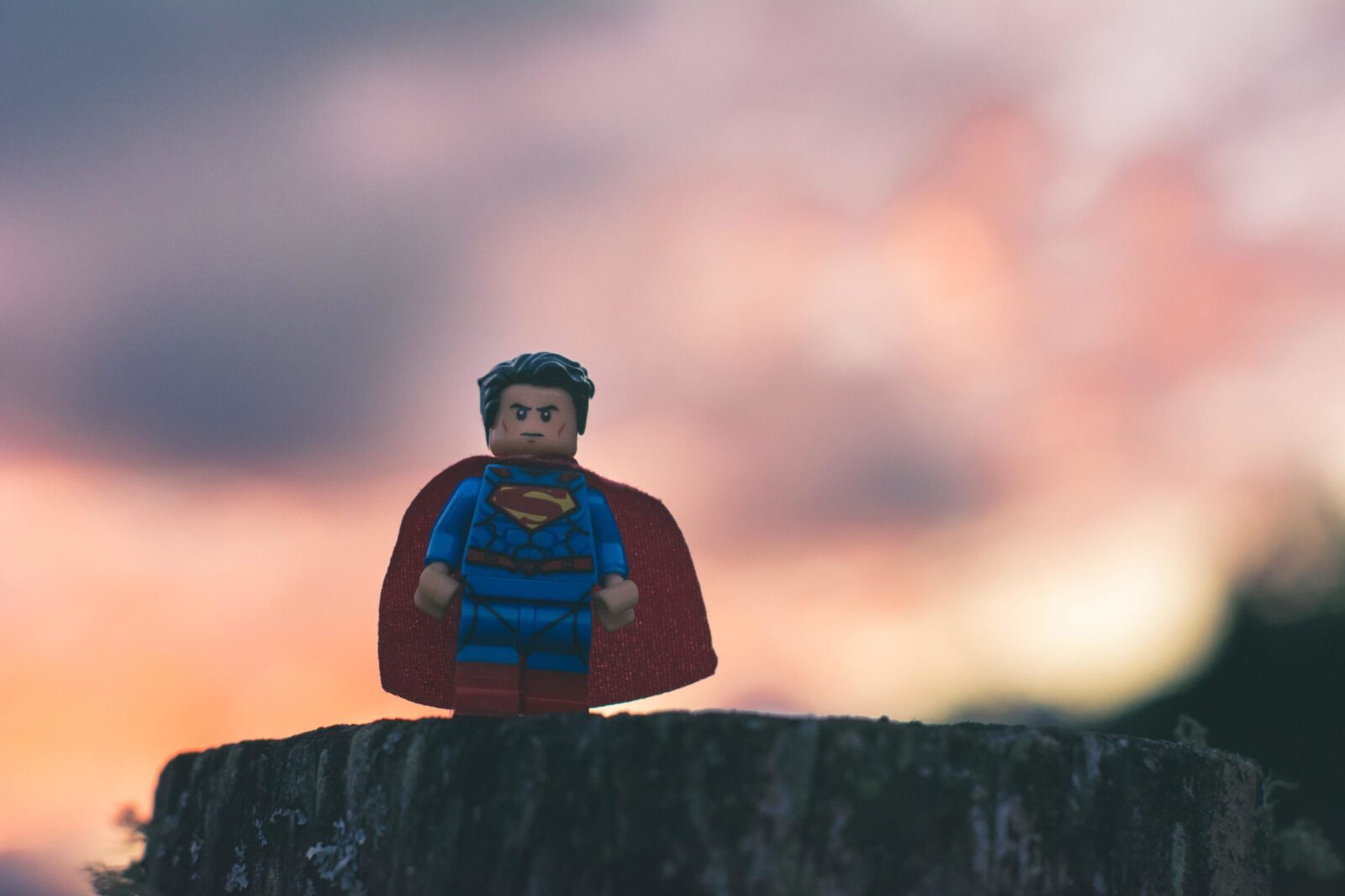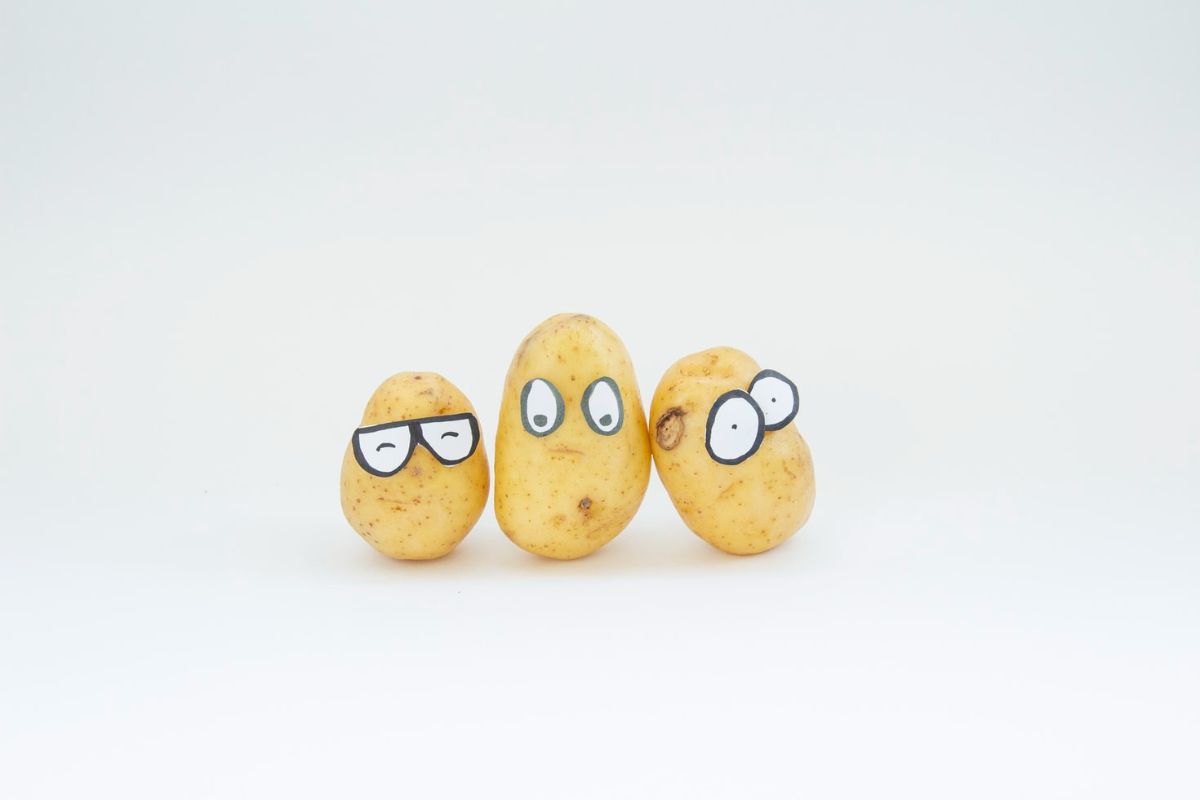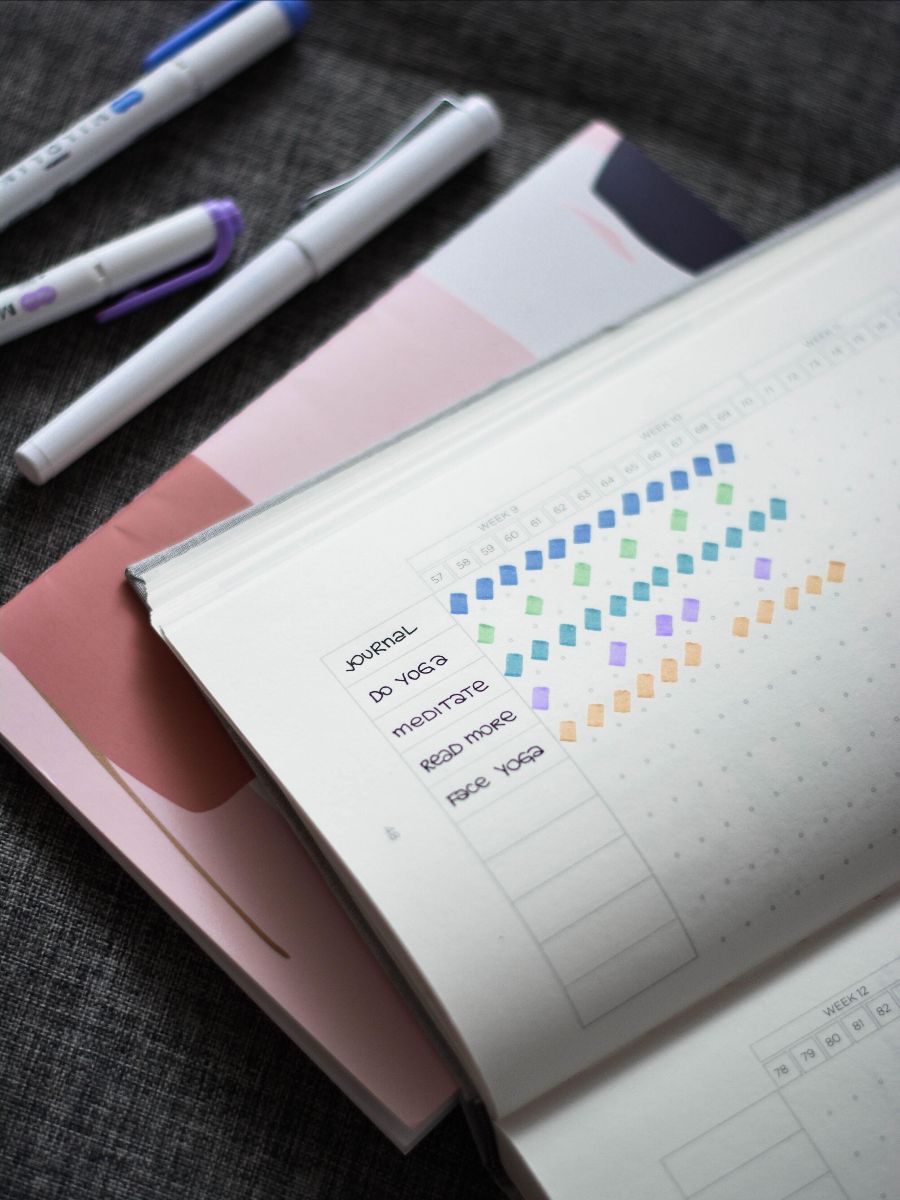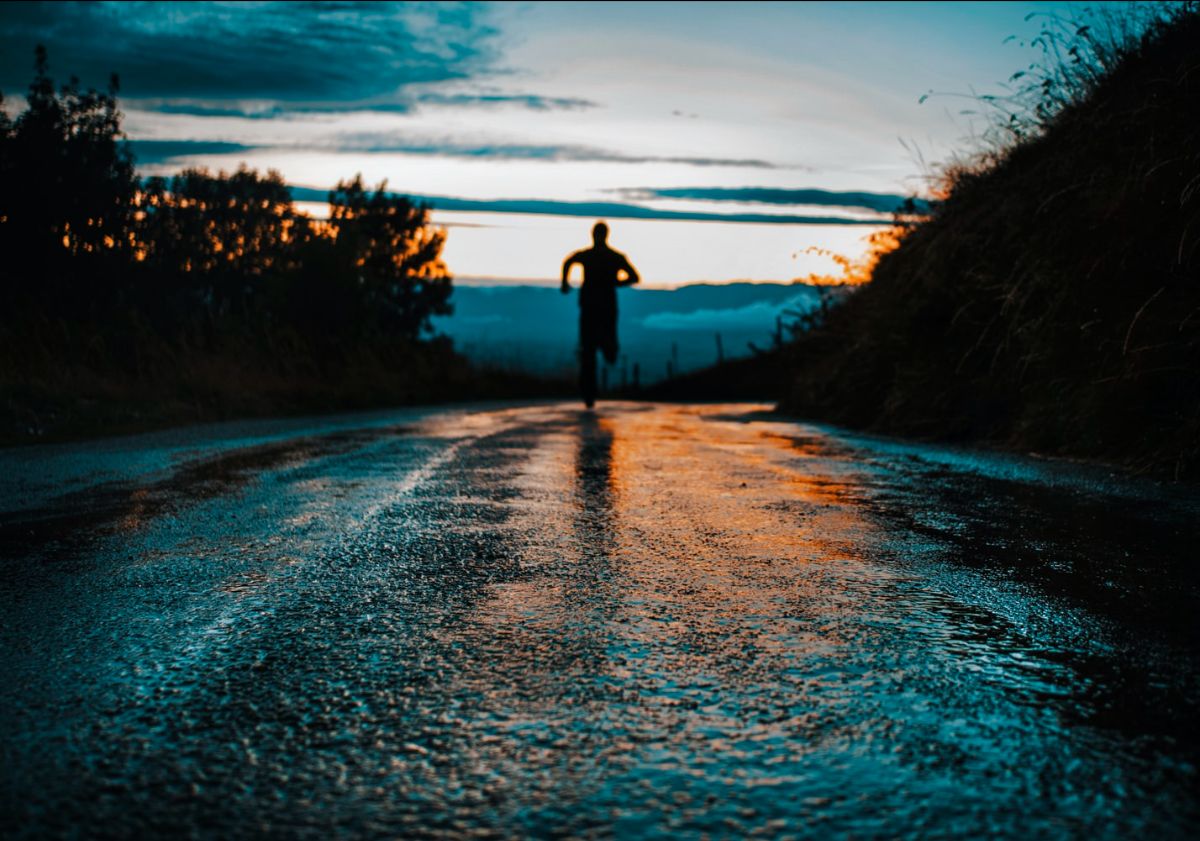I Learned My Best Life Lesson Last Week…

I’ve been busy planning and thinking through the Best Of series hoping to share some important lessons I’ve learned in Business and Marketing. It started out with the “Best Business Innovation” talking about how a business overcame challenges by removing the barriers in their process. We also presented our “Best Commercial” which highlighted Jessica and her emotional journey that touched the hearts of many.
Getting ready to award our third Best Of 2021, something very unexpected happened. I got a phone call from my mom. This is pretty common since I am her IT department for all the electronics at their house. I run over to fix things all the time. Wifi issues, cable issues, TV issues, phone Issues…oh, sometimes plumbing issues, and even car issues…but her voice was shaky. She said, “You should come over now and take dad to the hospital, he’s having severe chest pains.”
Quick history. 5 years ago, through a series of tests, we found out my dad had over 90% blockage in his heart. We also found out that his heart had a severe plaque build-up which made it very difficult and risky to operate. After my sister and I advocated for his heart to be fixed (they were going to send him home with medication because the hospital didn’t have a surgeon that was willing to operate), he was flown in a helicopter to Keck Medical Center at USC to have 4 stents put in his heart. This saved his life and we were grateful for the surgeon, the medical science, and the prayers of many for his miraculous second chance at life.
When mom called, everything felt familiar as before…a flashback of uncertainty and fear. When we arrived at the emergency room, they took him in right away. They administered morphine for his pain and after a few tests, there were extreme levels of troponin which indicated that his heart had a severe injury…a heart attack. After his pain was managed, he was taken to his room to be monitored and figure out the next steps. We dropped off mom back at home that night, and as I walked around the house, I saw a handwritten will on the kitchen counter. Dad knew this was his last visit to the hospital.
Now, my dad and I don’t have a great history. I don’t know about many of you, but my dad was a source of deep pain for me growing up. As dad was navigating through his own difficulties in life, he made our lives pretty challenging. My childhood memories are filled with physical and verbal abuse resulting in very low self-esteem for me followed by a lot of rooted anger towards him. I blamed him for many of my own insecurities and failures. But the past 5 years have been different. As he’s nearing the end of his life, especially after the big scare, he’s been more open to sharing his own regrets and expressing his gratitude for me and my sister. He said, “I don’t know if I would still be alive if it wasn’t for you two”…and he kept thanking us for our care and love toward him and mom.
I sat in my comfy chair in my home office the next morning thinking about dad. And I did something I’ve never done before. I wept. I wept for my dad. And in the depth of my soul, I knew that I loved him. And that he loved me. And I came to a realization for the first time in my life that I have forgiven him. It was a slow and gradual process of healing but I think I can actually say that out loud now. I have forgiven him.
I’ve always heard stories and examples of the power of forgiveness. And I am beginning to believe that it’s real. It comes with a sense of freedom and peace which I would like to declare as this year’s “Best Life Lesson.” I know this is a bit unconventional as I am sharing something so personal with you, but I think it’s worth it.
We drove dad home last week after another successful and risky operation on his heart (now his 5th stent). We are all grateful for another chance. We are grateful for having more time to heal and having more time to find joy as we work to create more lasting and beautiful memories together during the final chapters of his life.
Forgiveness. That’s the word for today. Please help spread the word. It will change everything.
The Real Heroes Of Your Marketing

In a year where BOS Media spent so much time talking about stories, it makes sense that this week our Best Of 2021 series highlights a great moment in storytelling.
Just a reminder, over the next few weeks we’ll be celebrating some of my favorite moments in marketing and business. Hopefully taking this time to learn from the best will inspire us as we look ahead to the coming year.
When it comes to commercials, I’ll always give you extra points if you can move my emotions, and today’s winner definitely brought tears to my eyes.
My vote for Best Commercial of 2021 is “Toyota: Jessica Long’s Story | Upstream”
First of all, everything about this looks beautiful. It feels like a movie, and the way the water connects each moment of what led her to becoming a Paralympic swimmer is a powerful visual.
But you might be wondering, “What does this have to do with Toyota??” That’s exactly the point. No one really cares about the Prius’s gas mileage (although if gas prices don’t go down, that might start being a bigger deal haha).
All year long we’ve been saying, the best marketing is about MAKING SOMEONE ELSE THE HERO. People don’t connect with companies who talk about how great they are – the key is for your customers to feel like they’re the great ones.
I loved reading up about Jessica’s own reaction to the commercial. She said it’s rare for her to get emotional, but that seeing the spot got the tears flowing and “perfectly captures her life’s story in one minute.” Here’s how she summed it up:
“There is hope and strength in all of us and more than ever (this pandemic year), we need hope. I hope people see my story and they feel inspired to do that thing that they’ve been scared of – that thing no doubt is kind of scary but then they realize that they’ve had the strength all along.”
It sounds a lot like the line at the end of the commercial: “We believe there is hope and strength in all of us.” But hearing it in her words, it’s basically the opposite of a marketing slogan. It’s a true story.
Here’s to finding a story that will touch the hearts of our customers and help them be the hero in 2022. “It might not be easy, but it’ll be amazing.”
How Urban Plates Restaurant Won My Vote This Year

How many of you have witnessed one of your favorite shops, restaurants, or any other businesses shutting down this year? I have. One of my favorite restaurants in downtown LA called Dong Il Jang closed after 41 years. They were the pioneers of a slightly progressive new style of Korean BBQ served at your table along with epic Kimchi Fried Rice at the end. They also offered an old traditional semi-private room where you’d take off your shoes and sit on the floor. We just loved going there.
During such an unpredictable time with businesses closing left and right, some others uniquely stood out. In fact, the more I saw the shifts and pivots they were making as the world kept changing, I was in awe. So I thought, why don’t we just dedicate the next month or so to a “Best of” series. The best of everything I’ve personally experienced this year that’s worth mentioning.
Let’s start with Urban Plates as “Best Business Innovation.”
Urban Plates opened in 2011 with the idea that people are changing the way they dine out. People want high-quality, customizable meals which are affordable, convenient, fast, yet with an inviting atmosphere. Whoa! That’s a lot to cover. But Urban Plates made it happen.
It’s not a full-service restaurant, but it’s not all self-service either. It blended the two in a perfect combination. You order at the counter so there’s no pressure for a 20% gratuity; at the same time, there’s always someone walking around offering to refill your drinks and get you what you need. If you don’t see anyone around, you can get up and get it yourself. Best of both worlds. Oh, and did I mention their interior and outside patio vibe was perfection?
As impressive as all that was, I was even more blown away by what they did during the pandemic. Suddenly, they had to rethink the way the guests entered into crowded spaces, and find a way to make quick adjustments to the changing attitudes around eating in public. Basically, they were confronted with a whole new set of obstacles that threatened their livelihood. So they studied what they were up against, and came up with a strategy: they launched an app. That’s it. And this app brilliantly removed all the barriers they were facing – here’s how:
- Barrier 1 – I don’t want to stand in line: No one likes lines. So the app completely eliminates walking up to the counter to order – you can order directly from your app.
- Barrier 2 – I want to choose where I sit. Once you enter the restaurant, you choose your table. You can pick it yourself. Just sit down wherever you’d like. The first thing the app asks you is “where are you sitting?” Every table has a number and you simply enter it. The food you order comes directly to your table. What??
- Barrier 3 – I want to see what I’m getting. The app is full of eye candy. Every main dish, side dish and even the drinks are pictured in the visual menu. Nothing to read, just pick what looks good and that’s what you get.
- Barrier 4 – I want a discount. Whatever meal you order in the app has a guaranteed price of $10. Which is crazy because most of the meals average $12-$15. You can save up to $5 just by ordering from the app. Oh, and you can order for your entire party. When we go out with friends, we can save $15-$20 just by ordering from the app. (The app requires a monthly subscription of $10/month, but it pays for itself after 1-2 visits). This is also a great business strategy.
- Barrier 5 – I want to order takeout. No problem – simply choose the takeout option when you order. There’s also a delivery option which will bring it right to your door (extra cost for that though).
- Barrier 6 – I don’t want to get out of my car. Well, guess what? You don’t have to when you order takeout. There’s a check-in button on the app so when you arrive in the parking lot, you’re one click away. It will ask what color and model of the car you’re in and they will run it over to you.
So, what did I learn? I learned that we need to remove the barriers. Here’s your action step – come up with a list of barriers that your clients/customers might have for your business or services that you offer. Then, remove them. Remove them all! Don’t be afraid to change. The faster you adapt and pivot, the more a world of opportunities opens up, and you’ll continue to grow and thrive through the most difficult times in history.
Congratulations, Urban Plates. Thanks for leading the way.
This Video Will Make You Jump Out Of Your Seat

What if I told you that I started this “Habit” series knowing that I was going to end it with the video below? It’s true. Because this video is like the grand finale during a musical. The iconic song slowly and progressively increases its intensity and gets louder and louder, higher and higher, and finally reaches the highest and loudest point until ultimately, the crowd jumps to their feet and bursts into cheers! Let me break it down.
- Act 1: We talked about goals, habits, systems, and how if you want to achieve something, it’s better to focus your time on developing a system rather than discipline or inspiration. Read about it here. Okay, the crowd is sitting but getting warmed up.
- Act 2: We talked about the path of least resistance and learning how to create that very “system” that we discussed. The key to a great system is to make it the least resistant. Whoa! Read about it here. The crowd is now fully engaged, but still sitting down in their normal chill position.
- Act 3: We talked about the 2-minute rule that in order to make it the path of least resistance, an important rule to follow is to keep the task under 2 minutes. Read about it here. The crowd is beginning to slide forward on their seats, it’s too much just to sit still.
- Intermission: Okay, calm down. Walk around the theatre, go to the bathroom, grab some cookies and take a selfie.
- Act 4: We talked about making our habits automatic and consistent, just like our mashed potatoes. How do we do that? We do it by not setting goals but creating behavior that becomes automatic which leads to the outcome that you want. Read about it here. The crowd is now on the edge of their seats…something crazy is about to happen and they are all feeling it.
- Act 5 – Final Act: Watch this video. This is the crescendo – defined as the loudest and the highest point reached in a progressive increase of intensity.
Did you watch it? Did you jump out of your seat and burst into cheers? Let me put it into perspective, this video has been watched over 10 million times. This has over 7,300 comments and over 351,000 likes. Also, read the comments, everyone says the same thing I am feeling about this video. “Wow!” “Finally!” “Greatest talk I’ve ever heard!” “Powerful!” and my favorite “This guy deserves applause for every single word he is speaking!”.
Why? Because everything we talked about actually works. He proved it himself. And he proved it in an extraordinary way. And he also proved that he’s just an ordinary person like you and me. And as ordinary people with our own weaknesses and lack of discipline, we can all do this. We can all achieve the most ambitious goals.
Are you inspired like I am? Okay then, let’s go. Let’s have the best year yet. This is our year, I can feel it.
What Do Business Leaders And Mashed Potatoes Have In Common?

Sometimes in sports, you hear an athlete described as “automatic.” Like when Steph Curry has a wide open 3 – he’s automatic. Serena Williams serving for the win – she’s automatic.
It might sound strange considering that BOS Media strongly believes in being more human – why would we want to highlight such a robotic form of excellence?
The past few weeks, we’ve been getting you ready for 2022 by discussing the best ways to create systems for success. Research says that 40-50% of what we do each day is habitual – “behaviors that have been repeated enough times that they become more or less automatic.” Those statistics might actually be low, since habits often determine how we spend the next chunk of our time as well.
Think about a habit many of us have: taking our phone out to check it. We all know how that one habit can take us down a rabbit hole – an entry point for many hours of behaviors and decisions that follow.
But what if you could use this tendency to your advantage? What if the habits that lead to positive outcomes also became automatic?
“Automaticity” is yet another principle I’ve learned from James Clear. It’s important because most of the behaviors that produce the best outcomes require no training whatsoever. They’re things we already know how to do! We don’t need to train the behavior – we just need to train making it automatic.
As we said last week: “You don’t rise to the level of your goals; you fall to the level of your systems.”
In other words: STOP SETTING GOALS. That’s not going to bring about the results you’re looking for. Instead, put your energy into the system of habits we’ve been discussing – tiny habits that become automatic are the most proven way to see lasting change.
James Clear likes to say, “Outcomes are a lagging measure for the behavior that came before. Don’t design the outcome; design for the behaviors that lead to the outcome.”
So what do business leaders and mashed potatoes have in common?
Consistency. Whether you like lumpy or smooth, what really matters is being the type of leader who shows up to the job and people know: “they’re automatic.”
Happy Thanksgiving!
The 2-Minute Rule

First of all, just to be clear – please don’t confuse “the 2-minute rule” with “the 3-second rule.” As you probably already know, the 3-second rule states that food which has been dropped on the ground can still be consumed as long as it’s picked up within three seconds. It’s based on the theory that any germs/ants that happen to be nearby require at least three seconds to contaminate the food. This rule has saved me many times (especially when the food being dropped was bacon), but that’s not what we want to talk about today.
The 2-minute Rule is a continuation of our conversation last week about how tiny habits can result in big transformation. As we said before, the key is to “eliminate the resistance” by creating incremental shifts in our behavior. The new habits we implement are so small that they essentially fly below the radar of the blockers that normally prevent us from achieving our goals.
And that’s where our Tiny Habits become Atomic Habits. That’s the title of a book by James Clear – I mentioned before, what he wrote changed my life, both in how I do business and as a runner. In the book, he proposes the “Four Laws of Behavior Change”:
- Make it Obvious
- Make it Attractive
- Make it Easy
- Make it Satisfying
He recommends starting with MAKE IT EASY – which leads us to the 2-minute rule. The idea is: Whatever habit you’re trying to build, scale it down to something that takes two minutes or less to do.
If you want to read 30 books a year, start with reading one page.
If you want to journal, start with writing one sentence.
If you want to be a runner, start with putting on your running shoes every day after work.
It might seem silly or inconsequential at first, but force yourself to stick with it. His argument is: “A habit has to be established before it can be improved.”
One of my favorite analogies he shares is how every action we take is like a vote for the type of person we want to be. By showing up for two minutes a day, we’re consistently casting votes to reinforce this new identity. Or as he calls it, we’re “mastering the art of showing up” – using small habits to prove to yourself that you really are a person with this new capacity.
I know we all want to accomplish big things, but don’t underestimate the power of these small habits. They compound over time – a 1% change in trajectory today has a massive effect in the long run.
And the truth is, anyone can set a big goal. The world is full of winners and losers who all started with the same goal in mind. As James Clear says, “You don’t rise to the level of your goals; you fall to the level of your systems.”
Here’s to setting up a system of small habits that lead to big outcomes.
The Path Of Least Resistance

Last week, we introduced the idea of creating positive habits as we prepare to head into 2022. So you might be surprised to see today’s subject line… have we already given up on what we were hoping to accomplish?? This might be a new record for breaking a new year’s resolution – two months before January!
No – this subject line is actually a clue to the most proven system for developing healthy habits. The key is ELIMINATING THE RESISTANCE.
If you’ve ever tried to motivate yourself to establish a new habit, I’m sure you know what I mean when I talk about “the resistance.” We have these outcomes in our minds (to lose weight, reduce stress, or do something creative), and suddenly it’s like we’re swimming upstream. It’s weird – there are so many things we can do with no resistance whatsoever (eat a donut, watch Netflix), and yet for some reason these healthy choices are met with a wall of opposition.
But good news – some brilliant Stanford research might have cracked the code. Watch the video below.
The secret is: Make the new habit extremely tiny.
If you do this right, the new habit will require almost no motivation, and the opposing forces of resistance won’t even know it’s there.
At that point, all you really need is a TRIGGER for the new behavior. When will you regularly do this new tiny habit?
Don’t worry – Stanford figured this out too. The answer in one word: AFTER.
Every day, you consistently do a whole bunch of stuff: wake up, make coffee, get dressed, etc – all the activities that are already built into your normal routine. So here’s the trick: attach the tiny habit TO the familiar behavior.
Here’s a simple way to phrase it – just fill in the blanks:
After I ___(daily activity)___, I will ____(tiny habit)___.
The example the Stanford guy shared was, “After I pee, I will do 2 push-ups.” The habit is tiny, and the trigger had a frequency to match the desired behavior (especially if he drank a lot of water).
What inevitably happens (once the resistance in our brain has been bypassed) is we think: “This is so easy. I could do even more.” And next thing you know, you’re doing 10 push-ups, or greater levels of whatever tiny habit you’ve created.
The last step: celebrate the tiny victory. Even if you just tell yourself, “I’m awesome.” Because you are! You’re literally changing your life one tiny habit at a time.
Goals, Habits, Systems And Identity

I always wanted to be a runner. I’m not sure why. I guess to me, runners had something I lacked… discipline, endurance, patience, mental toughness…even a hint of crazy. I’ve read many articles and books that link running with personal growth, entrepreneurship, and even success. And now, I totally get why it was out of my reach.
I’ve always struggled with running – I could barely run a mile without being completely out of breath and energy. I honestly thought something was physically wrong with me since a lot of my friends were able to quickly and easily build up the endurance to start competing in marathons. This was such a faraway dream for me – I never thought I’d ever one day run a marathon. 26.2 miles, are you kidding me?
During one of the toughest and most challenging years of my life and career (I’ll tell you all about it someday), I decided to get out of my own slump by setting a goal to train for and run a full marathon. My thought at the time was: if I could run a marathon, I could do anything. And I needed to believe that about myself. Fast forward six months, I ran across the finish line on mile 26.2, with my hands up in the air and tears streaming down my face. I did it. I set my goal, worked at it, and achieved it. End of story.
Well, not really. Although I accomplished something I thought I’d never attain in my lifetime, when someone asked me if I would do it again, I said no. In fact, I still didn’t enjoy running. I didn’t see myself as a runner. The picture that I had in my mind of a runner certainly wasn’t me. I really didn’t understand why I felt that way…UNTIL I read the book called Atomic Habits by James Clear. He helped me make sense of my running journey and added vocabulary to what I was going through. So, I thought it would be fun to share it with you.
The book starts off with a surprising suggestion: “Forget about setting goals.” What? Yup, that’s right…his whole argument is, “There’s a better way.”
“When we start thinking about the outcome we want to achieve, we think about setting goals. But setting and achieving a goal is only a momentary change. You want to instead think about setting a system. A system is a collection of habits, processes and behaviors. If you focus and dedicate your time and effort to developing and following your system, you’ll become the person that you want to be. Which is more important than reaching your goal.”
A couple of years after the marathon, without even knowing, I had created a simple system of habits and processes that I followed week after week, year after year. I am proud to say that I now identify myself as a runner. I truly enjoy running and it’s a huge part of my daily habit. In the last year alone, I was able to log over 1500 miles. That’s almost 29 miles every seven days – a marathon a week.
We set goals because we want better outcomes, but ironically, we are much more likely to reach those outcomes by not thinking about our goals and pouring our energy into bettering our system.
As we prepare to close out 2021 and start a fresh new year, I would love to dedicate some time to discuss what I’ve studied about creating habits and systems. Let’s learn together and implement some new habits for an awesome year ahead, where we actually accomplish those things we thought might never be possible.
So excited to keep this conversation going over the next few weeks.
You with me? Let’s go!
